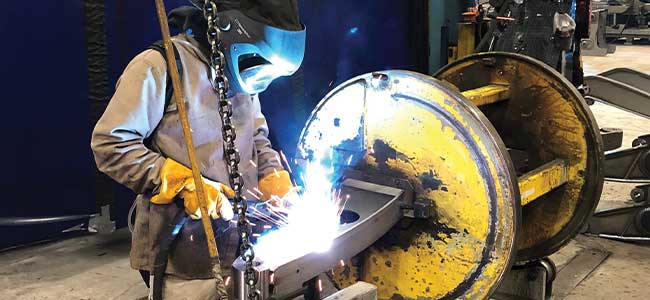
Breathing Easier: The Importance of an Effective Respiratory Protection Program
A solid respiratory protection program includes understanding the hazards, having the right types of respirators and filters or cartridges, and ensuring workers know how to use and maintain them properly.
- By Tom Burgess
- Aug 01, 2023
I’ve seen it often in several workplaces, and most people don’t know how dangerous and ineffective it can be.
People may hold onto respirators and cartridges for years, without knowing that those trusty chemical cartridges inside have a limited shelf life and must be replaced regularly. It’s a classic case of thinking you’re fully protected, but you’re not. And that’s not all. Picture this: you have a dirty work area, and what do you find hanging on the wall next to where employees hang their jackets? Respirators! Collecting whatever is in the air that they are intended to be providing protection from.
And that’s when the importance of having a solid respiratory protection program comes into play. It takes more than just issuing respirators to make sure they are providing the protection we want. That includes making sure we understand the hazards and have the right types of respirators and filters or cartridges, that workers know how to use them properly, and observing how they are used and maintained.
While respirator designs have seen limited changes, recent advances in managing respiratory protection programs and emerging trends have been driving improvements in this field. This includes online tools to help determine the type of respirator, including the OSHA Advisor Genius: Selecting an Appropriate Respirator and the NIOSH MultiVapor™ app to estimate how long a chemical cartridge will last.
Respirator Improvements
In the wake of the COVID-19 pandemic, the importance of respiratory protection reached unprecedented levels, particularly in healthcare. Extensive research efforts have focused on improving the comfort and efficacy of N95 respirators, which are crucial for safeguarding healthcare workers from airborne infections.
Materials science and ergonomic design advances have resulted in respirators that offer enhanced breathability and improved fit, minimizing discomfort during prolonged use. Moreover, the increased emphasis on respiratory protection in healthcare has paved the way for cross-industry learning, where strategies employed in medical settings are adapted to other occupational exposures.
Certain industries and occupations demand stringent respiratory protection measures due to the nature of their work. Emergency responders, firefighters, and individuals working with highly hazardous materials face unique challenges that necessitate high levels of respiratory protection. The physically demanding nature of these occupations, combined with exposure to hazardous substances, increases the risk of adverse health effects. Consequently, respiratory protection and industrial hygiene programs must specifically address and mitigate these risks.
This article originally appeared in the August 1, 2023 issue of Occupational Health & Safety.